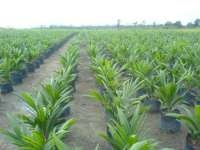
Indonesia imposes moratorium on new land permits
Palm-oil producers and mining companies rejoice at the two-year moratorium on new concession permits for forests and peat lands.
Moody’s said the delayed issuance of the moratorium follows last year’s climate deal with Norway, under which Norway pledged up to $1 billion in aid to support Indonesian efforts to reduce greenhouse gas emissions from mining and plantation deforestation. Indonesia, the world's third biggest emitter of greenhouse gases, had targeted a 26% reduction in emissions by 2020. The decree is positive for rated miners because it will resolve the conflicts generated by recently granted local and regional mining permits overlapping existing concessions from the central government.
In 2010, the original announcement of a proposed moratorium created some uncertainty about expanding plantations in that it could have reduced the availability of Indonesian forests. The uncertainty drove palm-oil producers to look to alternative venues in tropical Africa, one of the few other areas in the world suitable for palm trees. However, the final details of the moratorium alleviate these concerns, and we expect any negative credit effects to be modest.
The enacted regulations freeze new permits in over 64 million hectares of primary forests and peat lands, but allow palm-oil producers to clear 68 million hectares of secondary forests on Indonesia’s total land mass of 181 million hectares. In addition, earlier decrees had already set aside much of the designated primary forests for conservation rather than development. The definition of primary and secondary forests, however, remains vague, which will allow flexibility during implementation of the regulation. Moreover, new permits issued earlier this year enabled many plantations to stock up sufficient land banks, so the regulation should not constrain their operations for several years.
Now that the Indonesian government has clarified details of the moratorium, we expect expansion of palm-oil plantations to pick up this year after slowing last year when outlines of a moratorium first emerged. The 68 million hectares of secondary forest provide ample land for palm-oil cultivation. For example, Golden Agri, the largest palm-oil producer in Indonesia and the second largest in the world, used only 442,000 hectares as of year-end 2010. In 2010, some 7 million hectares of plantation in Indonesia produced 23 million tonnes of crude palm oil worth around $20 billion, based on an average price of $901/tonne.
A clarified regulation also reduces the need for palm-oil producers to expand into Africa, an area of high political risk, regulatory instability, and high costs because of transportation distances and an absence of crushing plants and refinery networks.
The moratorium’s impact is mixed for the Indonesia’s coal mining sector. It may delay investment in and development of surface mining projects, but it is positive for development of underground mining in protected forest areas. Indonesia currently produces the majority of its thermal coal from open-pit mining, which requires concession owners to obtain forest land-use permits. However, because most existing coal mining operations are outside of primary forests and peat lands, the moratorium’s affects should be minimal for our rated Indonesian mining concession holders.
The recent decree also imposed a moratorium on new mining permits, which is a credit positive for existing concession holders. Since the implementation of a new mining law in 2009, local and regional governments were allowed to issue mining permits, many of which overlapped existing concessions granted by the central government, causing friction between existing concession holders. For example, Bumi (Ba3 stable) sued other miners holding local permits to mine within its concession. The moratorium intends to resolve the conflicts of overlapping permits and will be positive to the longterm growth of investments in the Indonesian mining sector.
























 Advertise
Advertise






